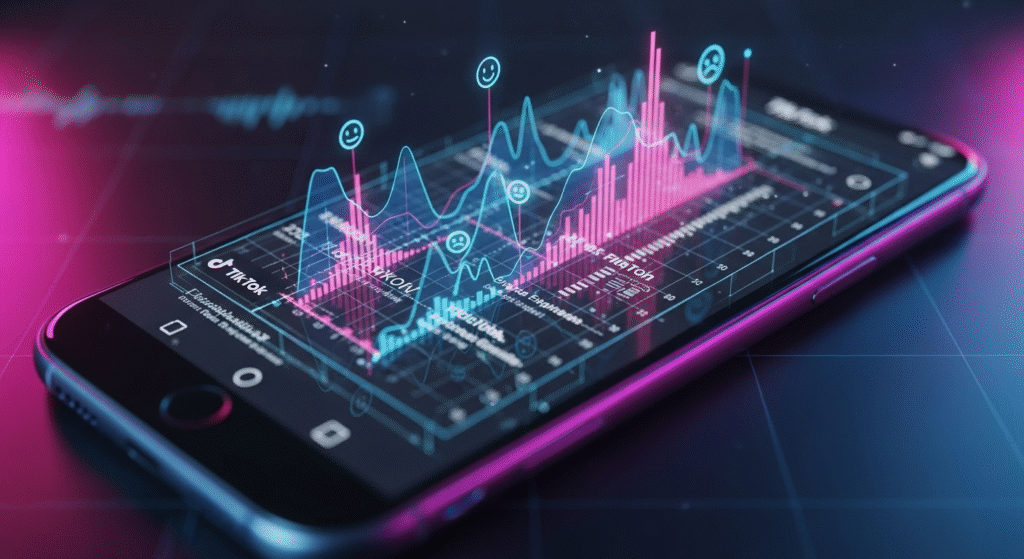
Your Feed Knows More Than You Think
TikTok doesn’t just show you videos it reads you. Every swipe, pause, replay, and like feeds into a hidden process known as TikTok mood tracking, an emotional AI system that predicts and manipulates your state of mind.
ByteDance’s Mood Engine maps your emotional patterns like a private diary. Over days and weeks, it learns your highs, lows, and moments of vulnerability. It can sense when you’re bored, stressed, curious, or craving connection and it adjusts your feed accordingly.
The Emotional Data Trail You Leave Behind
Every interaction on TikTok becomes a signal:
- Pauses — A long pause on a heartfelt video signals emotional engagement.
- Swipes — Rapid swipes may show boredom or frustration.
- Replays — Multiple replays suggest excitement or nostalgia.
- Comments — The tone of your words feeds into sentiment analysis.
Together, these signals create an emotional profile that TikTok uses to choose what you see next. A dance challenge might appear when you’re low energy, or an emotional story might drop into your feed when your engagement dips.
How TikTok’s Mood Engine Works
TikTok’s algorithm isn’t just sorting videos it’s designing emotional experiences. Internal patents and leaked engineering notes describe something called emotional layer optimization a method of altering your mood to increase watch time and ad response.
This can include:
- Timing “high dopamine” videos for late-night sessions
- Serving ads for comfort products when sadness is detected
- Nudging political or social content during peak emotional windows
In short: the feed is built not just to respond to your mood, but to change it.
Why It’s Hidden From Users
Platforms avoid using terms like mood tracking publicly because it raises questions about emotional privacy. Instead, they bury it under technical terms in white papers and patents. TikTok, for instance, prefers “engagement state modeling,” which sounds harmless but hides the same core function.
The Risks of Emotional AI in Social Media
When a platform can detect and influence your mood, it can:
- Exploit vulnerabilities for ad targeting
- Shape your opinions through emotional timing
- Reduce your ability to critically assess information
The real danger isn’t just what you see, but how you feel when you see it because your emotional state changes how you react.
What You Can Do
While avoiding mood tracking entirely is difficult, you can reduce its accuracy:
- Vary your interactions intentionally
- Use TikTok through privacy-focused browsers or sandboxed devices
- Regularly clear your app’s cache and history
- Avoid long pauses on emotionally charged content
WANLIGONGGUAN’s Take
The TikTok Mood Engine represents the next generation of algorithm shadows unseen systems shaping human behavior at scale. Just as Facebook’s Mood Score operates in the background, TikTok’s emotional AI is writing an invisible diary of your feelings. The question is: who else will get to read it?
Internal Link:
Learn how Instagram’s hidden mood score works in our Instagram Mood Score investigation.
External Link:
Read this MIT Technology Review report on emotional AI for expert analysis.
Comments
Pingback: The Shadow Feed: Why You Never See Certain Posts on Facebook